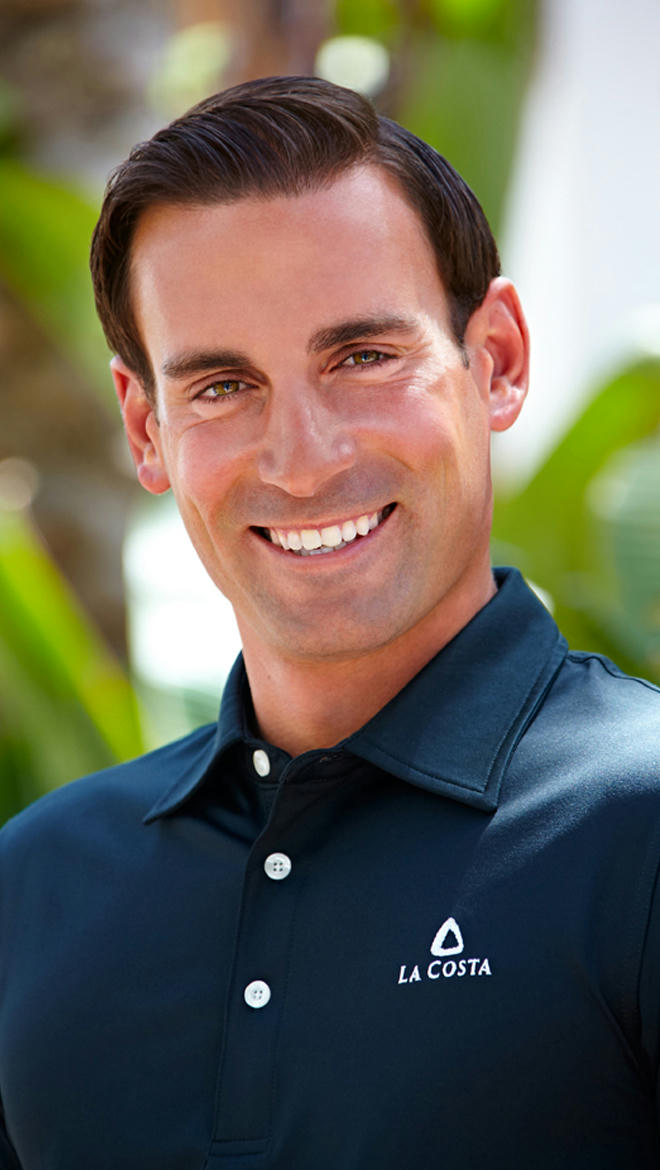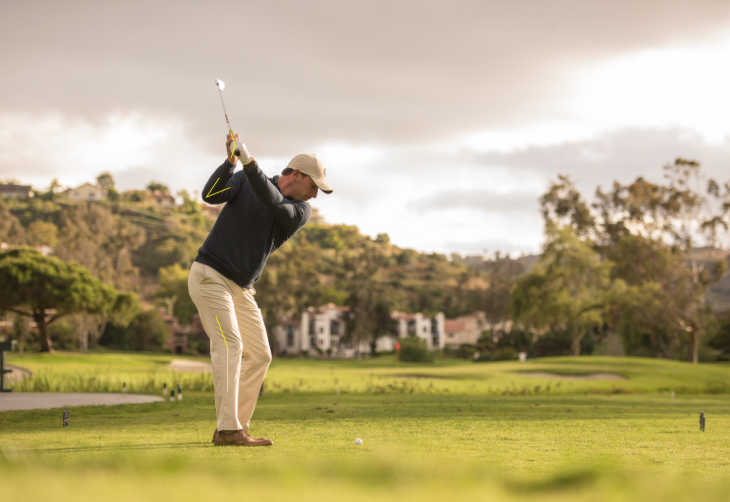By A.J. Avoli
In order to gain power, it’s vital that we gradually store energy so that we can release what we created through the golf ball, much like an archer that would pull back a bow and arrow. Where do you store your power? In the angles you create.
Angles are essential to building power during the backswing, and there are three angles located in the trail side joints that will increase your productivity and power during the backswing: the WRIST, ELBOW and KNEE (see accompanying image).
The trail side of your body, or the right side for a right-handed golfer, is the power side. If you can improve the way your right side coils up in the backswing, you can become more efficient with less movement and better repeatability.

The TRAIL WRIST will be slightly bent in the address position, and as you start the club in motion, it will increase its bend. The hinging of this wrist creates an angle between the wrist and the clubshaft. The wrist also supports the weight of the club at the top of the swing and allows for the club shaft to be on plane. The top of the swing position is similar to a server holding a tray.
The TRAIL ELBOW plays an import role in creating effortless power during the backswing. The trail arm should start with a slight bend; this ensures that you have spine tilt away from the target in the setup. The elbow bend gradually increases during the backswing to create a lever between your upper and lower arm, much similar to a throwing position. If your lead arm was the frame of the bow, you want to pull it tight by folding the elbow and coiling the body. The elbow will orbit near the rib cage. Correctly folding the elbow will make your backswing more efficient and repeatable.
The TRAIL KNEE is the third angle to loading power during the backswing. While the wrist and elbow are busy creating leverage, the rotation of the shoulders and hips are synchronized. The trail knee plays a vital role, as it is securing your foundation to coiling in the backswing. Retaining its flexed position on a tuned hip will ensure that you are loaded into your right side. This angle will allow you to brace your weight pressure and rotation as you swing to the top of the backswing.
By creating these angles properly, you will not only gain power, but harness it as well. Club head speed alone will not give us our desired results … we must also be precise as to where we are contacting the ball on the face of the club. The proper creation of these three angles will allow you to create a swing that is on plane and will improve your chances of hitting the ball in the center of the clubface.
 A.J. Avoli, Director of Instruction at Omni La Costa Resort & Spa’s Golf Performance Institute in Carlsbad, is an award-winning and expert teacher in the golf game, with experience in senior instructor positions at the Hank Haney Golf World Headquarters, Jim McLean Golf School and Top Golf Academy. Avioli has a degree in Professional Golf Management, and was named as one of Golf Digest’s “Top 40 Young Instructors in America” and “The Best Teachers in California.”
A.J. Avoli, Director of Instruction at Omni La Costa Resort & Spa’s Golf Performance Institute in Carlsbad, is an award-winning and expert teacher in the golf game, with experience in senior instructor positions at the Hank Haney Golf World Headquarters, Jim McLean Golf School and Top Golf Academy. Avioli has a degree in Professional Golf Management, and was named as one of Golf Digest’s “Top 40 Young Instructors in America” and “The Best Teachers in California.”

